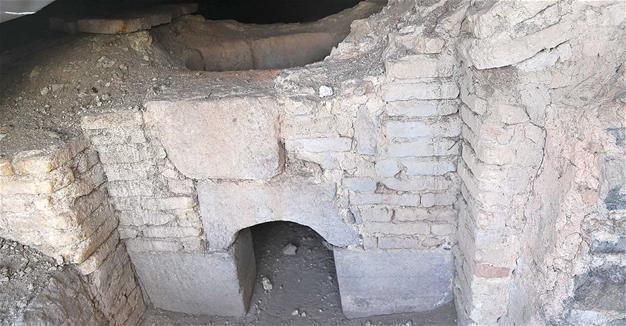Sultans’ bath a surprising find atop Takkeli Mountain
KONYA
 A bath used by the Seljuk sultans has been uncovered in a castle on Takkeli Mountain in the Central Anatolian province of Konya, which was once the capital of the Anatolian Seljuk state and is home to 5,000-year-old walls and cisterns.
A bath used by the Seljuk sultans has been uncovered in a castle on Takkeli Mountain in the Central Anatolian province of Konya, which was once the capital of the Anatolian Seljuk state and is home to 5,000-year-old walls and cisterns.Takkeli Mountain, which is located within the borders of central Selçuklu district and overlooks all spots in Konya, has traces of many civilizations from the Hellenistic, Roman, Byzantine, Seljuk, Karamanid and Ottoman eras. One reason why the mountain was home to these civilizations is because it has an observation tower.
The top of the mountain, which is called Gevele in ancient documents, is also home to historic walls as well as many cisterns and temple. In the western and eastern skirts of the mountain are rock tombs dating back to the Roman era.
Necmettin Erbakan University History of Art Professor Ahmet Çaycı said archaeological excavations on the mountain have been carried out in collaboration with the Selçuklu Municipality, the Konya Museums Directorate and the university.
Serving the excavations as a consultant, Çaycı said five years had passed since the start of the excavations and so far they unearthed a good deal of very important historical objects and artifacts.
Çaycı said the Gevele Castle on top of the mountain served as a natural observation tower throughout history due to its structure and location and had a significant role in the defense of the city. He said the findings on the 1,720-meter mountain will shed light on the history of the Middle Age.
A surprise structure
The castle is home to a small mosque, cistern, tunnels and dungeons, and excavation work is continuing.
“Among the most important findings so far are two baths. They reveal the parameters of the structures in the Middle Age. The castle should have a view terrace and the venues where the sultan was hosted. We are continuing to search for it. At the same time, we have started the restoration work. Excavating is the simple part. It is also important to protect these places after excavation,” Çaycı said.
“After the end of excavation and restoration work, we will reveal their stories too, to shed light on our history of culture. According to many resources, Aladdin Keykubat and Kılıçarslan took shelter here under extraordinary circumstances. The bath is a significant detail in the architectural unity. Certainly, this place is the most important part of the castle,” he added.
“It served the sultan. Water is boiled in the furnace of the bath and there are private rooms in a narrow field here that were used for washing. There are gaps in the lower part of the bath for water to circulate. This bath is very important because it is the original bath of the Seljuk era. We did not expect to find such a structure; it was a surprise for us,” Çaycı said.
















